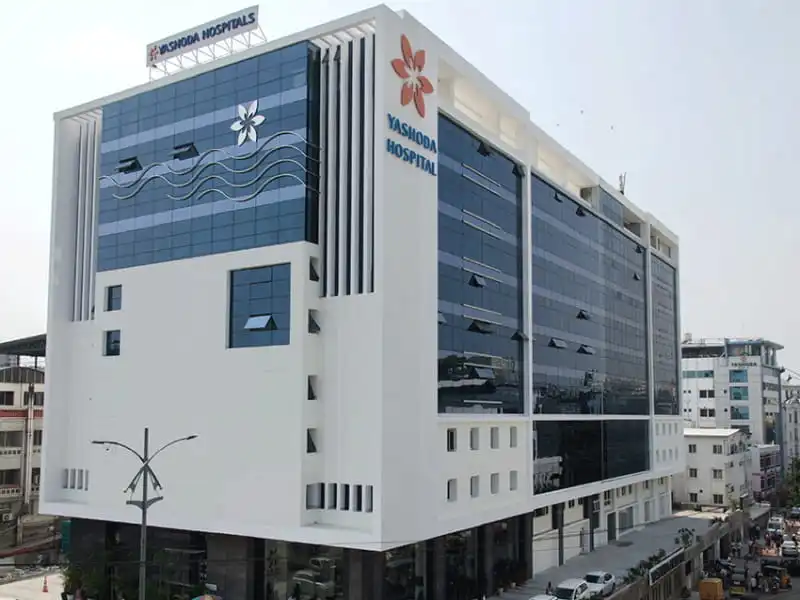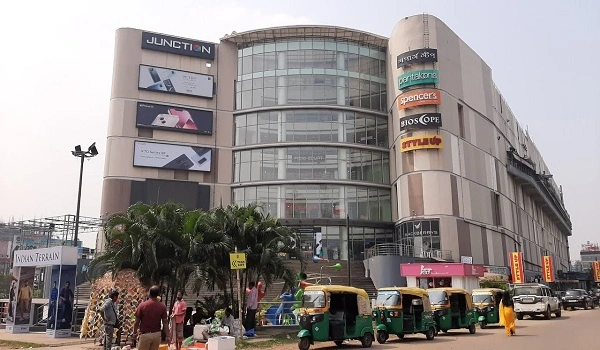hyderabad Main Road

Hyderabad is one of the most prominent cities in India, known for its rich history, vibrant culture, and fast-paced growth in various sectors. The city has become a major economic hub, offering a combination of traditional and modern living, making it an attractive destination for both locals and foreigners. A particular area that stands out in the city is the Main Road which runs through key districts, notably contributing to the development of posh areas and financial districts like Banjara Hills, Jubilee Hills, Gachibowli, and HITEC City. These districts have transformed Hyderabad into a global city with thriving business, residential, and commercial developments.
hyderabad History
- 1. Early Beginnings
The history of Hyderabad dates back to ancient times. Originally a part of the Maurya Empire (around 3rd century BCE), the region was later influenced by various dynasties, including the Satavahanas and the Ikshvakus. The area saw significant development under the rule of the Andhra Satavahanas, who controlled a large portion of the Deccan Plateau. These early rulers established towns, built roads, and encouraged trade, which laid the groundwork for the region's later importance.
In the early medieval period, the region was part of the Chalukya dynasty and the Rashtrakutas before falling under the control of the Kakatiya dynasty. The Kakatiyas, who ruled from 1083 to 1323 CE, made significant contributions to the region’s development. The Kakatiya dynasty built a strong fort in Warangal, which served as their capital, and this established a foundation for the later growth of Hyderabad.
- 2. The Delhi Sultanate and Bahmani Sultanate
In the early 14th century, the region fell under the control of the Delhi Sultanate. However, following the decline of the Delhi Sultanate in the 14th century, the Bahmani Sultanate was established in the Deccan. The Bahmani Sultanate ruled the area from 1347 to 1527, and during this time, they fostered a culture of art, architecture, and trade.
The Bahmani Sultanate fragmented in the early 16th century, leading to the rise of several smaller Deccan Sultanates, one of which was the Qutb Shahi dynasty.
- 3. The Qutb Shahi Dynasty (1518-1687)
The history of Hyderabad as a city really began with the establishment of the Qutb Shahi dynasty in 1518. The founder of the dynasty, Sultan Quli Qutb Shah, a former general in the Bahmani Sultanate, established his kingdom in Golconda, which is now a part of Hyderabad. The Qutb Shahi rulers expanded their territory and built the iconic Golconda Fort, which became the nucleus of Hyderabad’s cultural, political, and economic life.
The dynasty was known for its cultural contributions, including the promotion of Persian arts, literature, and architecture. They also supported the development of trade, making Hyderabad a thriving city. During this period, the city grew in prominence and became a major center for the diamond trade, especially with the discovery of the Golconda mines, which produced some of the world’s most famous diamonds, such as the Koh-i-Noor.
- 4. The Mughal Influence (1687-1724)
In 1687, after a prolonged siege, the Qutb Shahi dynasty was overthrown by the Mughal Empire, led by Emperor Aurangzeb. The Mughals annexed the Deccan region, including Hyderabad, into their vast empire. Under the Mughal rule, Hyderabad saw a decline in its political autonomy, but it continued to thrive as a regional center due to its strategic location and its wealth.
The Mughals left behind a legacy of grand architecture and infrastructure, and while they were in power, the region was heavily influenced by Persian culture. However, by the early 18th century, the Mughal Empire began to weaken, and the region's rulers sought more autonomy.
- 5. The Asaf Jahi Dynasty and Nizams of Hyderabad (1724-1948)
The key chapter in the history of Hyderabad is the rise of the Asaf Jahi dynasty, founded by Mir Qamar-ud-Din Siddiqi, who later took the title of Nizam-ul-Mulk. In 1724, Nizam-ul-Mulk, who was the Mughal viceroy of the Deccan, established his independent rule in Hyderabad. This marked the beginning of the Nizams' reign, which lasted for over two centuries.
The Nizams made Hyderabad a flourishing center of culture, architecture, and trade. The Nizams were known for their wealth, with the family being one of the richest in the world at the time. Under their patronage, the city saw the construction of several important landmarks, including the Chowmohalla Palace, Osman Sagar, and the Hussain Sagar Lake. They also introduced administrative reforms, which helped improve the infrastructure and governance of the region.
The Nizams were also great patrons of the arts and culture, and Hyderabad became known for its blend of Persian, Turkish, and local Deccan cultures. This period also saw the rise of the famous Hyderabadi Biryani, which remains a symbol of the city’s culinary heritage.
- 6. Hyderabad under British Influence (1800s)
Although the Nizams maintained their autonomy, the British East India Company gained significant influence over Hyderabad in the 19th century. By 1798, the Nizam signed a subsidiary alliance with the British, which allowed the British to maintain a military presence in the region and exercise considerable control over its affairs. The Nizams continued to rule as princely rulers under British suzerainty, though they had limited political power.
During this period, the Nizams' wealth and the importance of Hyderabad as a center of trade and culture continued to grow. However, like many other princely states, Hyderabad’s autonomy gradually diminished under British control.
- 7. Post-Independence and the Merging with India (1948)
After India gained independence in 1947, the Nizam of Hyderabad, Mir Osman Ali Khan, initially sought to maintain Hyderabad’s independence. However, this decision was met with resistance from the newly-formed Indian government, led by Jawaharlal Nehru. In September 1948, following a military operation known as Operation Polo, the Indian Army successfully annexed Hyderabad into the Indian Union, making it a part of India.
Hyderabad was then designated as a state in the Indian Republic, and it was later made the capital of the newly formed state of Telangana in 2014, following the bifurcation of Andhra Pradesh.
- 8. Modern Hyderabad (Post-1948)
Post-independence, Hyderabad has undergone rapid industrialization, urbanization, and modernization. The city’s transformation began in the 1980s with the rise of the information technology (IT) industry. The establishment of HITEC City, the development of large tech parks, and the growth of the pharmaceutical and biotech sectors helped Hyderabad emerge as one of India’s leading cities for IT and business.
Hyderabad’s economy has diversified significantly, and the city is now a global center for technology, business, health, education, and culture. The Gachibowli area, once a rural stretch, has now become a major IT hub, and HITEC City is home to several multinational companies. The city has also become a prominent destination for education, tourism, and trade, making it one of the most developed cities in India.
- 9. Hyderabad Today
Today, Hyderabad is a cosmopolitan city, attracting residents, students, professionals, and tourists from all over the world. It is known for its exceptional infrastructure, vibrant culture, rich history, and diverse community. The city is famous for its Hyderabadi Biryani, Pearls, Handicrafts, and Hyderabadi Haleem during Ramadan.
Hyderabad continues to grow at an impressive pace, with a booming real estate market, state-of-the-art infrastructure, and a thriving economy, making it one of India’s leading metropolitan cities.
Hyderabad’s history reflects its rich cultural heritage, economic significance, and transformation over the years. From a historic city ruled by sultans to a modern metropolis, Hyderabad stands as a testament to India's progress and resilience.
- Hyderabad’s Main Road has historical importance, dating back to the Qutb Shahi era. It connects key landmarks like Charminar, Macca Masjid, and Golconda Fort, reflecting the city’s past while linking old and new Hyderabad. Over time, it has evolved into a bustling area with modern developments, contributing to the city’s commercial significance.
- Posh localities like Banjara Hills, Jubilee Hills, and Gachibowli have grown along the Main Road. These areas house luxury residences, malls, and corporate offices. The road’s connectivity makes it convenient for affluent residents to commute to work or leisure destinations, offering a premium living experience with well-maintained roads and green spaces.
- The Main Road is central to Hyderabad’s booming economy, especially in IT, business, and finance. HITEC City and Gachibowli are vibrant business districts, home to multinational corporations and IT companies. The proximity to the Main Road makes it an ideal location for professionals and entrepreneurs.
- The Main Road has seen a residential boom, with luxury apartments, gated communities, and villas catering to the upper class. These high-end residences offer top-tier amenities, including swimming pools, gyms, and landscaped gardens, attracting professionals and executives.
- The Main Road is well-connected with major roads like Outer Ring Road (ORR), Inner Ring Road, and NH-65. The city’s public transport, including metro stations, buses, and auto-rickshaws, enhances accessibility. The road also leads to transportation hubs like Secunderabad Railway Station and Rajiv Gandhi International Airport, improving connectivity.
- Some of Hyderabad’s top educational institutions are located along the Main Road, such as Hyderabad Public School, Chirec International School, and ISB. Universities like the University of Hyderabad and Osmania University are also easily accessible from the Main Road, making it a family-friendly area.
- The Main Road offers access to renowned hospitals like Care Hospitals, KIMS, and MaxCure, ensuring high-quality healthcare services for residents, professionals, and visitors.
- Hyderabad’s Main Road is home to several entertainment and shopping centers, including Inorbit Mall, Forum Sujana Mall, and The Forum Mall. These malls offer shopping, dining, and entertainment, enhancing the lifestyle of those living nearby.
- The rise in commercial spaces, particularly office buildings and co-working spaces, has transformed the Main Road into a key business artery. HITEC City and Gachibowli are home to IT, finance, and consulting firms, driving demand for office spaces.
- Living along the Main Road offers luxury and convenience, with access to high-end villas, apartments, and services. Residents enjoy exclusive amenities like panoramic city views, private pools, gyms, and spas, with easy access to luxury shopping, dining, and events.
- There is a focus on sustainable development along the Main Road, with eco-friendly features such as energy-efficient buildings, solar panels, and rainwater harvesting. Green spaces are being expanded to balance urbanization with nature.
- The growth of the Main Road is supported by robust urban planning, with wide roads, drainage systems, and modern signage. Efforts to improve pedestrian infrastructure are underway, making it safer and more accessible.
- The Hyderabad police ensure safety through surveillance cameras, patrolling, and security personnel in residential complexes. Well-lit streets and easy access to emergency services contribute to the area’s security, making it safe for families and professionals.
- The Telangana State Government has invested in infrastructure development, public transport improvements, and the creation of new commercial zones to reduce traffic congestion and improve the quality of life for residents and businesses along the Main Road.
- With continued investment in sectors like IT, real estate, healthcare, and retail, the Main Road area is set for continued growth. The demand for residential and commercial properties is expected to rise, providing opportunities for investors and residents.
- The Main Road area fosters community engagement through cultural events, social gatherings, and community-driven initiatives. It is a platform for Hyderabad’s growing multicultural community to connect, celebrate diversity, and contribute to the city’s social fabric.
- The Main Road offers diverse lifestyle choices, from vibrant commercial districts to serene residential areas, allowing people to select environments that suit their preferences and lifestyles.
- As part of the Smart City Mission, the Main Road is undergoing modernization with smart traffic management, internet connectivity, and digital amenities to enhance urban living, making Hyderabad more efficient and sustainable.
- The Main Road has attracted both international and local investors, boosting Hyderabad’s economy. Investments in infrastructure, real estate, and retail sectors have led to world-class facilities and developments along the road.
- Hyderabad’s Main Road embodies the city’s transformation into a modern, global metropolis, blending historical charm with contemporary growth. It will continue to be a key part of the city’s expansion, offering opportunities for investment and high-quality living.
| Enquiry |








































